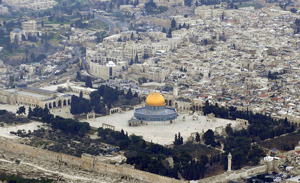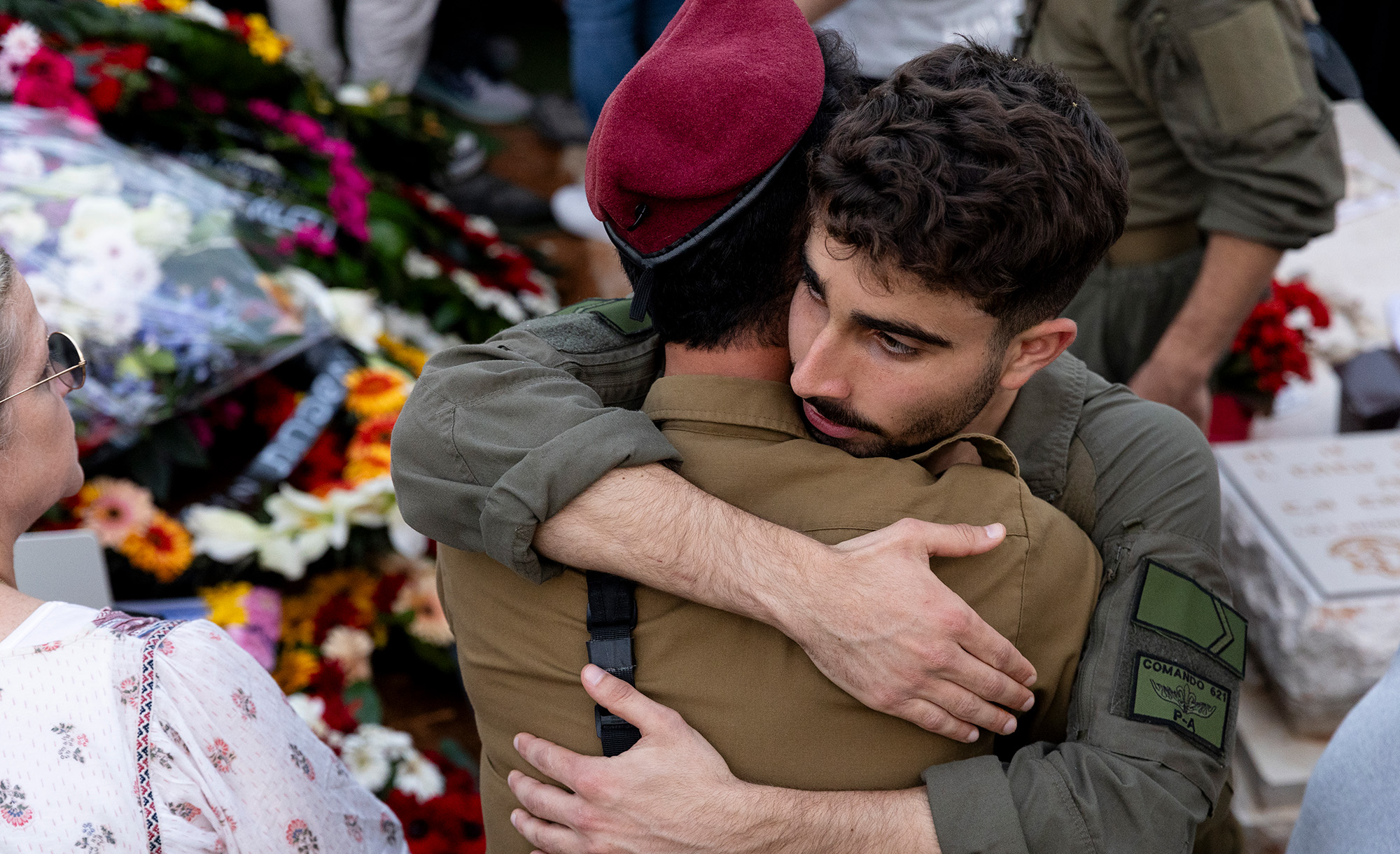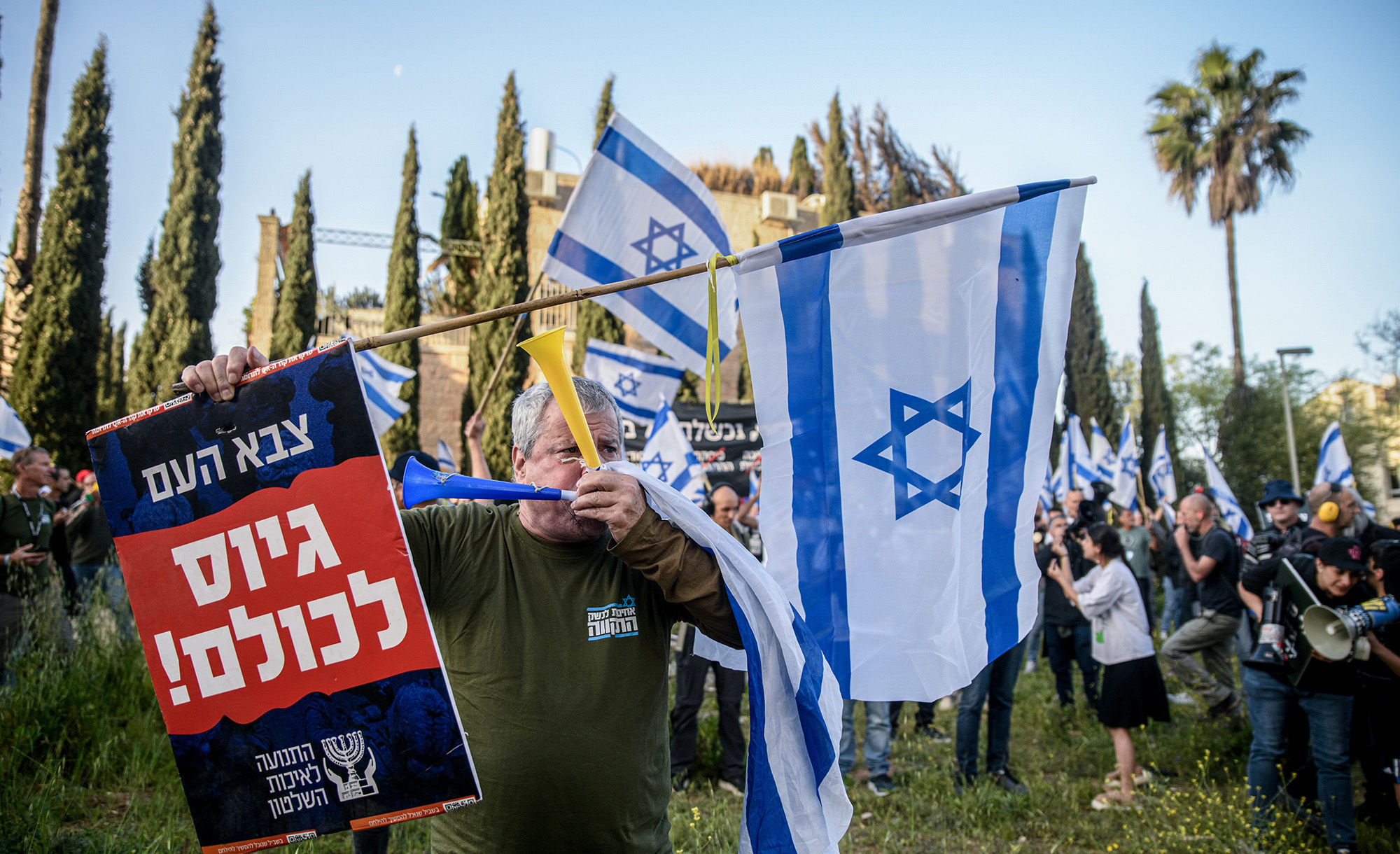The irony went largely unnoticed. On October 29, an Israeli rabbi and tour guide was gravely wounded in an assassination attempt several steps away from the Menachem Begin Heritage Center in Jerusalem. On the entrance walls to that building, boldly emblazoned, are these stirring words by the man whose legacy the Center honors:
Not by the right of might have we returned to the land of our forefathers but by the might of right. . . . And therein, all of its inhabitants, the citizen as well as the resident, will live in freedom and justice, in solidarity and peace.
The victim of the attack has long advocated that both Jews and Muslims be allowed to pray, in freedom and peace, on the Temple Mount, a site sacred to both faiths and the locus of Jewish aspiration for millennia. In doing so, he has championed not might but right: in a Jewish state that serves as an island of liberty in the Middle East, why should Jews be the only citizens deprived of the right to pray at what is their faith’s holiest site?
Those who speak out on this matter have been labeled by some in the Israeli and Western media as “extremists” and inciters of violence. Meanwhile, the would-be assassin has been celebrated as a hero not only by Hamas, with which his family is connected, but also by the leader of the Palestinian Authority. Two days after the October 29 incident, Benjamin Netanyahu, prime minister of Israel, reaffirmed his support for what is known as the “status quo”—the arrangement according to which Jews are allowed to visit but forbidden to pray on the Temple Mount.
As the days pass and the situation in Jerusalem and elsewhere in Israel has become more volatile—and more violent—other government figures, including Defense Minister Moshe Yaalon, have reiterated that in today’s tense circumstances, Jews should refrain from visiting the Temple Mount. Yaalon’s concerns are understandably prudential. Still, as this latest chapter in a dispiriting story continues, it may be worth setting the issue of prayer on the Temple Mount in context.
The story begins, oddly enough, at Israel’s most triumphant moment. On June 7, 1967, Day 3 of the Six-Day War, the exultant cry of Lt. Gen. Mordechai (“Motta”) Gur—“the Temple Mount is in our hands!”—rang throughout the land. At war’s end, with the whole city of Jerusalem reclaimed and reunited under Israeli sovereignty, authorities faced the question of what to do about the Mount.
At the time, religious management of the site had long been delegated to the Jordanian clerical leadership known as the Waqf. Although Jewish religious law (halakhah) forbids Jews from visiting certain parts of the Mount—the most sacrosanct areas associated with the original Temple of King Solomon—the northern and southern portions of the current space atop the Mount are much later extensions, dating from the time of Roman rule.
Thus, in 1967, as many observers now agree, the most appropriate course would have been for the Israeli government to set aside, in one of these Roman-era locations, a dedicated section for Jewish prayer that would not interfere with Muslim worship. But that did not happen. Instead, Israel’s government handed the keys back to the Waqf. In this, it was abetted by the Chief Rabbinate, which posted a sign informing Jews that they were forbidden to ascend or pray on any portion of the Mount.
The government’s decision, one of the most misguided in Israel’s history, set in place a policy that resulted in the worst of all possible worlds. First, many Jews who continued to visit the Mount did so without any rabbinic guidance, entering areas where according to halakhah they should not have set foot. Second, Israel’s self-imposed ban on Jewish prayer persuaded both the Waqf and the Palestinian and Arab world in general that Israel’s leaders lacked any attachment to or reverence for the site. The Muslim authorities proceeded to destroy the physical evidence that Jews had ever worshipped God on the Mount.
Over the decades, the Waqf dug massive trenches on the Mount and dumped hundreds of truckloads of dirt and archaeological treasures into the Kidron Valley below. For this flagrant violation of the “status quo,” it earned little opprobrium from an Israeli government sensitive then as now to any controversy surrounding the site. In vain did the archaeologist Eilat Mazar argue that “The Israeli government doesn’t really understand that by turning a blind eye to the illegal actions undertaken by the Waqf and the Islamic Movement, it does not achieve the true quiet it seeks, since it only increases the appetite of the Muslim side, which notices that its acts go without punishment.”
In turn, this signal of Jewish indifference, as David Horovitz, the editor of the Times of Israel, has recently summed up, “ensured the resonance among Palestinians and the wider Muslim world of Yasir Arafat’s foul false narrative that ‘historically the Temple was not in Palestine’—and that, by pernicious extension, the Jewish nation has no historical sovereign legitimacy in this part of the world at all.”
Today, with the support of a diverse group of prominent rabbis from the religious Zionist community, more and more Israelis are embracing the cause of Jewish prayer on the Mount. They have come to realize the incongruity of annually celebrating Jerusalem Day, the anniversary of “the Temple Mount is in our hands,” even as the Hamas flag flies frequently there while Jewish prayer is prohibited. In the words of Tzipi Hotovely, a young Orthodox woman and rising star in the Likud party who now serves as deputy minister of transportation in the Netanyahu government, “Jews’ prayers must be heard on the Mount. This is the holiest place for the Jewish people and the status quo must change.” Hotovely and others are speaking the language not of might but of right, a right grounded, as Israel’s national anthem Hatikvah has it, in the “hope of 2,000 years.”
How Israel’s government will choose to balance pragmatism and principle, only time will tell. But the principle itself could not be clearer. In The Revolt (English edition 1951), Menachem Begin, the founding father of Hotovely and Netanyahu’s political party, recounts how British forces during the Mandate period prevented Jews from sounding the shofar at the Western Wall. At the time, many considered acquiescence to be the wiser course; by contrast, Begin insisted that the right of free Jewish worship in Jerusalem stood at the very core of the independence that Zionists sought.
“What our ancestors refused to tolerate from their ancient oppressors,” Begin wrote, “even at the cost of their lives and freedom, is tolerated by the generation of Jews that describes itself as the last of oppression and the first of redemption.” He went on:
A people that does not defend its holy places—that does not even try to defend them—is not free, however much it may babble about freedom. People that permit the most holy spot in their country and their most sacred feelings to be trampled underfoot are slaves in spirit.
Or, as Tzipi Hotovely has put it in the Knesset, “There is no Zionism without Zion; there is no Zion without Jerusalem; there is no Jerusalem without the Temple Mount.” The right of Jewish prayer on the Mount is linked to the soul of Zionism itself.
More about: Israeli politics, Israeli-Palestinian Conflict, Menachem Begin, Temple Mount








